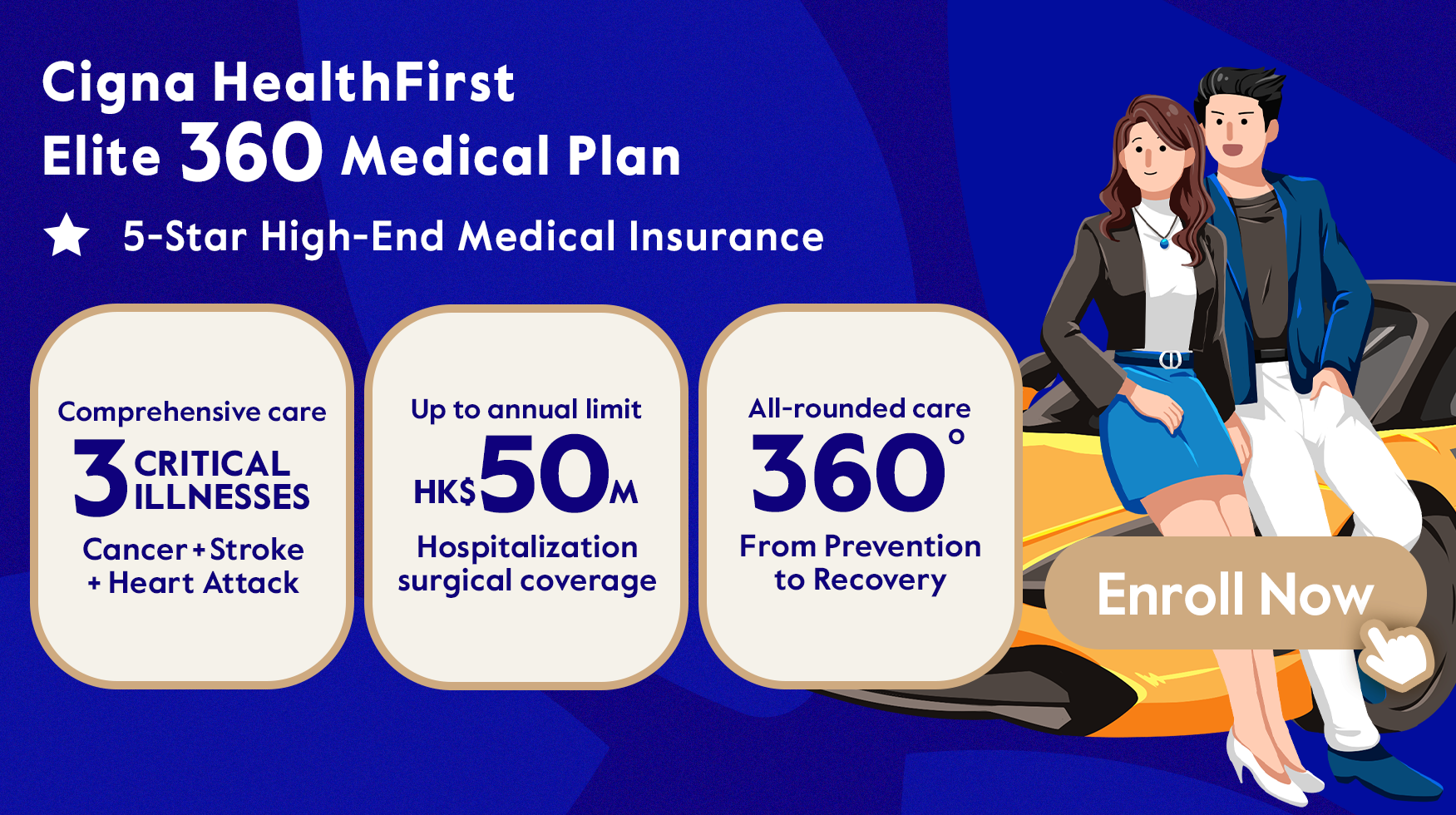Back pain is a common ailment among urban dwellers. If you persistently experience large-area back pain without particular spots, you may have osteoporosis. Your bone density decreases over time with this physical illness, leading to bone pain, fractures, and even other complications. Many of you may hear of the terms ‘osteoporosis’ and ‘bone mass’, but is lower bone mass the same as osteoporosis? If you suspect the condition, which test should you undergo? Let’s get to know more in this Cigna Smart Health article.
What is Osteoporosis?
After 30 years old, your bone density starts to lose along with age. Although osteoporosis affects both men and women, women generally have a high risk of the condition with a higher rate of bone density loss, compared with their counterparts. Osteoporosis can be classified as primary and secondary. The former is mainly caused by aging, while the latter is contributed by diseases or other illnesses, such as diabetes, leukemia, etc.
Early Symptoms of Osteoporosis
Early-stage osteoporosis do not have significant signs, but you should pay more attention if you observe the following symptoms.
- Low back pain
- Cervical pain
- Loss of height over time
- Unintentional weight loss
- A stooped posture
Who Should Receive a Bone Density Test?
As mentioned above, women are prone to osteoporosis. Apart from your age and sex, below are the risk factors of osteoporosis.
- Underweight
- Small body frames
- A family history of osteoporosis
- Low calcium intake
- Smoking
- Excessive drinking
- Excessive consumption of caffeine
- High sodium intake
- Lack of exercising
- Fall in estrogen levels
- Lack of vitamin D
- Thyroid problems: Overactive thyroid leads to too much thyroid hormone
- Previously received bowel surgery
- Long-term use of steroids and other medications that interfere with the bone-rebuilding process
Bone Density Tests
According to the Statistics of the Census and Statistics Department, there were 57,800 reported cases of osteoporosis in early 2017, of which 78.5% of patients are female. If you are in the high-risk groups, you should receive check-ups regularly for early intervention. Below are the common bone density tests nowadays.
1. Ultrasound Bone Diagnosis
With a non-radioactive ultrasound bone diagnosis, your doctor can estimate the density and strength of your bone. However, ultrasounds can only perform for early screening.
2. Dual-Energy X-ray Absorptiometry (DEXA or DXA) Scans
Dual-energy X-ray absorptiometry (DEXA or DXA) scans are also known as bone mineral density (BMD) tests, using two X-rays at different energy levels. These X-rays use very small amounts of radiation to determine how solid the bones are. The amount of radiation is around one-tenth of a planar X-ray lung film, and the procedure is around 10 minutes. It is the most common bone density test nowadays.
Bone Density Test Results
Osteoporosis, reflected by your bone density test results, is reported in two numbers, namely T-score and Z-score. These scorings can show the risk of fractures that you expose.
T-score
If your T-score equals 0, your bone density is at the average value. A low value refers to a lower bone density, which means you have a higher risk of fractures.
Z-Score
Your Z-score is the number of standard deviations above or below what is normally expected for someone of your age and sex. It is not for diagnosing osteoporosis but rather as a reference. If your Z-score equals or is lower than -2.0, it means that you have an expected value lower than your age group. A Z-score over -2.0 shows that your result is similar to those in your age group.
Low Bone Mass & Osteoporosis
In fact, lower bone density or mass is not equivalent to osteoporosis, but it can be a risk factor for osteoporosis. According to the World Health Organization’s definitions based on bone density levels, A T-score between −1 and −2.5 indicates that you have low bone mass. A T-score of −2.5 or lower indicates that you have osteoporosis. The greater the negative number, the more severe the osteoporosis.
| Categories | T-score | Risk of Fractures and Suggestions |
| Normal | +1 or –1 | Low risk of fractures. Suggest consuming adequate calcium with regular exercises. |
| Low bone mass | -1 to -2.5 | Low-to-moderate risk of fractures. Suggest consulting your doctor to prevent the continuous loss of bone mass. |
| Osteoporosis | <-2.5 | Moderate-to-high risk of fractures. You should visit your doctor at your earliest advance to find out the causes and receive treatments. |
| Severe (established) osteoporosis | <-2.5, and have had one or more fractures | Extremely high risk of fractures. You must receive treatments to avoid repetitive fractures. |
Fees of Bone Density Tests
You can undergo a bone density test at private hospitals and medical centers priced from HK$550 to HK$1,300, depending on the type of test and package you selected. Below are some reference fees for bone density tests in Hong Kong.
| Medical Organizations | Items | Fees* |
| The Family Planning Association of Hong Kong (FPAHK) | Bone Density Measurement | HK$550 |
| Union Imaging & Healthcheck Centre | Screening for osteopenia and osteoporosis | HK$690 (General assessment of health status: HK$4,570) |
| Hong Kong Adventist Hospital – Tsuen Wan | Bone Densitometry | HK$800 |
| Hong Kong Well Men Centre | Bone Density Health Plan | HK$850 |
| Hong Kong Well Women Centre | Bone Density Health Plan | HK$850 |
| CUHK Medical Centre | Radiology Service - Bone Densitometry | Pediatric: HK$1,150 Adult: HK$1,680 |
| Hong Kong Baptist Hospital Ambulatory Medical Centre | Bones & Joints Health Plan (including physical examination, gout disease screening, inflammation screening, rheumatoid arthritis screening and osteoporosis examination) | HK$1,300 |
*Charges taken from the respective medical organization as of 15 Dec 2021
Apart from regular check-ups, you can also lower your risk of osteoporosis in daily life. You can consume food items that are rich in calcium and vitamin D. Exercising, going hiking, and doing outdoor activities can also help vitamin D3 intake so as to prevent severe bone diseases.
Cigna HealthFirst Elite 360 Medical Plan offers comprehensive and personalized medical coverage across the stage prevention, diagnosis, treatment and recovery, with a range of hospital and surgical benefits, optional insurance benefits with an annual limit of up to HK$50 million, personalized health assessment, three critical illnesses(cancer, stroke and heart attack) all-rounded care and international medical concierge service. A 360-degree total health protection that spans across all the key stages of your health journey. Learn more here.
Source
© Cigna Healthcare 2023
Information provided in this article is intended for health and fitness purposes only and is not intended for use in the diagnosis of disease or other conditions, or in the cure, mitigation, treatment or prevention of disease (see Terms & Conditions for details). Any health-related information found in this article is available only for your interest and should not be treated as medical advice. Users should seek any medical advice from a physician, especially before self-diagnosing any ailment or embarking on any new lifestyle or exercise regime. Any information contained in this article may not be suitable, accurate, complete or reliable. Cigna Healthcare accepts no responsibility for the content or accuracy of information contained on external websites or resources, or for the security and safety of using them. "Cigna Healthcare" and the "Tree of Life" logo are registered trademarks of Cigna Intellectual Property, Inc. in the United States and elsewhere, licensed for use. All products and services are provided by or through operating subsidiaries, and not by The Cigna Group.




